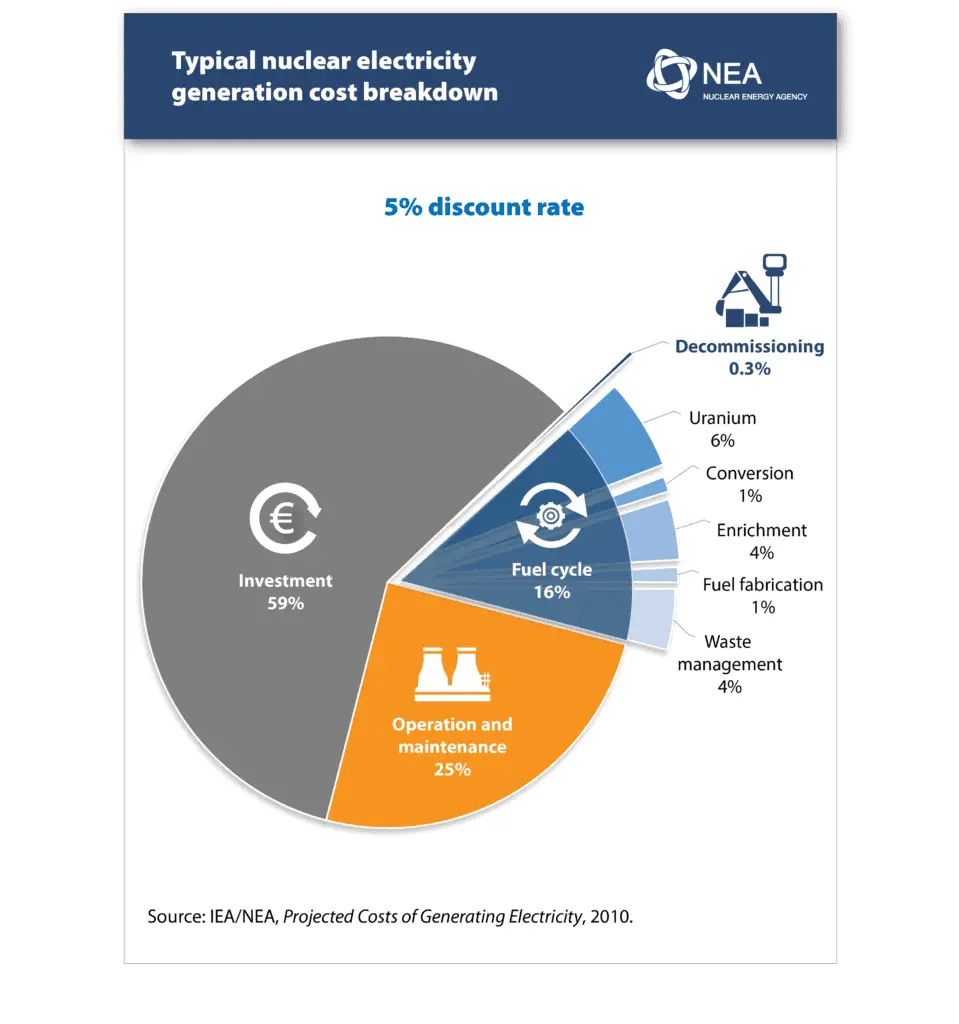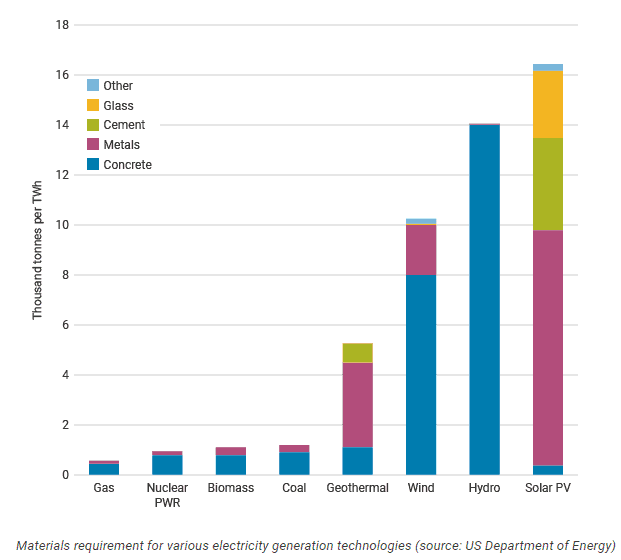Nuclear energy is one of the few sustainable primary sources. It is the only controllable large-scale source that could complement variable renewable sources (wind and solar power) and that could ensure reliable 24/7 energy.
What do renewable and sustainable mean in the energy world? These terms are not the same. Not everything renewable is sustainable; in turn, not everything that is sustainable is necessarily renewable.
Sustainability is the capacity to endure relatively continuously across various domains of life. Sustainability is defined in the context of human civilization as the practical ability to meet today’s basic needs without compromising future generations’ ability to meet their basic needs and maintain their standard of living.
Sustainability is not possible if human society:
- extracts and disperses substances faster than they return to the earth’s crust (e.g., oil, coal, metals, etc.)
- depletes and degrades resources faster than they are regenerated and progressively destroys ecosystems (e.g., deforestation, overfishing, and excessive land use)
- it is not able to radically limit or stop exponential population growth
The first two points directly concern energy uses. Sustainable energy uses energy sources that will not be depleted in the time frame relevant to humanity and that ensure the ability of biological systems to maintain diversity and productivity indefinitely. To some extent, it means the use of renewable energy sources. But even a renewable energy resource becomes unsustainable whenever used faster than regenerates or when its use depletes and degrades other resources. Some renewable energy projects, such as clearing forests to produce biofuels, can cause severe environmental damage. Also, the problem with wind and especially solar power is that supply does not correspond with demand. In other words, the highest energy consumption for most countries is in autumn and winter, when there is little wind inland and little sun. The higher the share of these sources in the energy mix, the higher the demands on the overcapacity, transmission system, and energy storage systems, which results in excessive use of land and materials (lithium, rare-earth metals, etc.). Renewables tend to make very large demands on resources to construct the plant used for harnessing the natural energy – per kilowatt-hour produced, much more than nuclear power. Wind turbine plants need over ten times the amount of steel, 15 times the amount of copper, and more than twice the amount of other critical minerals than nuclear power per kWh output.
Conversely, a non-renewable resource can be sustainable if used at a slow enough rate that supplies last for thousands of years, and the environmental impacts don’t cause huge problems. This is most obvious concerning nuclear power. The world’s present measured resources of uranium (6.1 Mt) in the cost category are less than three times present spot prices and used only in conventional reactors are enough to last for about 90 years. But this time does not include the following aspects:
- Proven resources. Like fossil fuels, the amount of uranium available from conventional sources has long been underestimated, and reserves are only calculated for economically recoverable sources using present-day technologies and pricing.
- Fuel recycling. The removed fuel (spent nuclear fuel) still contains about 96% of reusable material (must be removed due to decreasing kinf of an assembly). Fuel reprocessing promises to save fresh fuel by order of magnitude. Today, the cost of uranium is a small percentage of the cost of nuclear fuel, which is itself a small percentage of the cost of nuclear power. Therefore, plant operators are not motivated to reprocess fuel.
- Advanced reactors and thorium reactors. Advanced fast reactors generally have an excess of neutrons (due to low parasitic absorption). These neutrons given off by fission reactions can “breed” more fuel from otherwise non-fissionable isotopes or be used for other purposes. The term “breeder” refers to the types of configurations which can be the breeding ratio higher than 1. That means such reactors produce more fissionable fuel than they consume. Today uranium is the only fuel supply for nuclear reactors. However, thorium can also be utilized as fuel for CANDU reactors or in reactors specially designed for this purpose.
- Unconventional resources. The main unconventional resource for uranium is rock phosphate. Uranium is also naturally present in seawater at a concentration of about 3 micrograms per liter, with 4.4 billion tons of uranium considered present in seawater at any time. In 2014 it was suggested that it would be economically competitive to produce nuclear fuel from seawater if the process was implemented on a large scale.
 Some commentators have argued that these facts strengthen the case for nuclear power to be considered renewable energy. We do not claim. It will be simple. Light water reactors make relatively inefficient use of nuclear fuel, mostly using only the rare uranium-235 isotope. The scarcity of uranium-235 makes current nuclear power unsustainable. But as you can see, there are a lot of cost-effective options. We must note that nuclear electricity prices are relatively insensitive to the price of uranium. For nuclear power plants, busbar costs are dominated by capital costs, which can make up more than 60 percent of the LCOE. On the other hand, fuel costs are a relatively small factor in a nuclear plant’s LCOE (less than 20 percent). As a result, the cost of electricity from a nuclear plant is sensitive to construction costs and interest rates but relatively insensitive to the price of uranium, which accounts for only 6% of the total LCOE.
Some commentators have argued that these facts strengthen the case for nuclear power to be considered renewable energy. We do not claim. It will be simple. Light water reactors make relatively inefficient use of nuclear fuel, mostly using only the rare uranium-235 isotope. The scarcity of uranium-235 makes current nuclear power unsustainable. But as you can see, there are a lot of cost-effective options. We must note that nuclear electricity prices are relatively insensitive to the price of uranium. For nuclear power plants, busbar costs are dominated by capital costs, which can make up more than 60 percent of the LCOE. On the other hand, fuel costs are a relatively small factor in a nuclear plant’s LCOE (less than 20 percent). As a result, the cost of electricity from a nuclear plant is sensitive to construction costs and interest rates but relatively insensitive to the price of uranium, which accounts for only 6% of the total LCOE.
The MIT report found that the most cost-efficient, reliable grid will come from an energy mix in the next decade.
Source: MIT, The Future of Nuclear Energy in a Carbon-Constrained World
